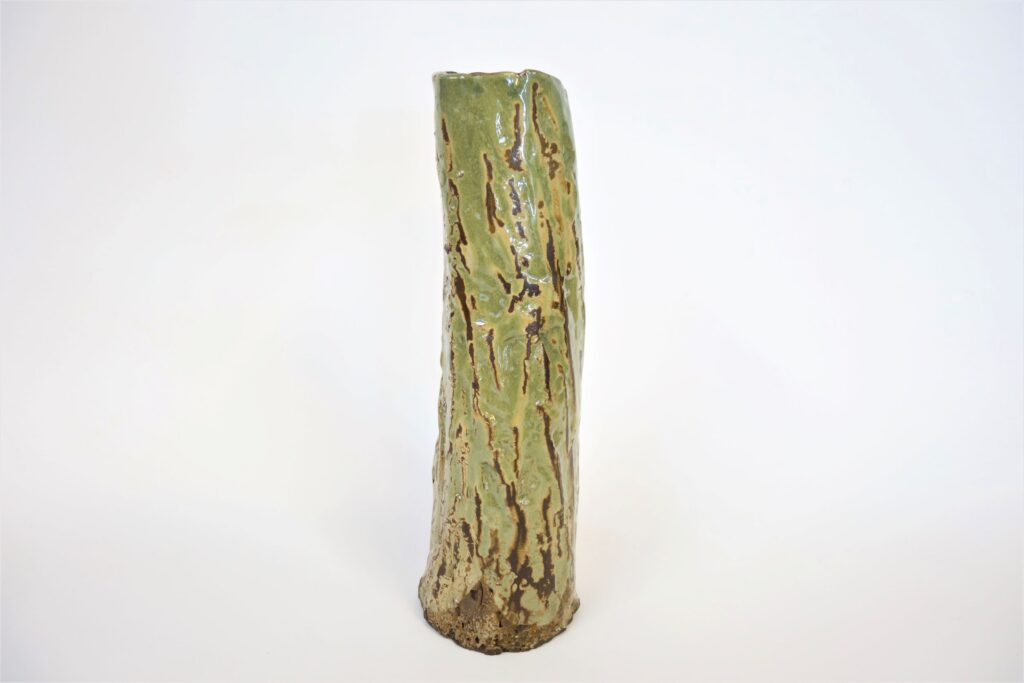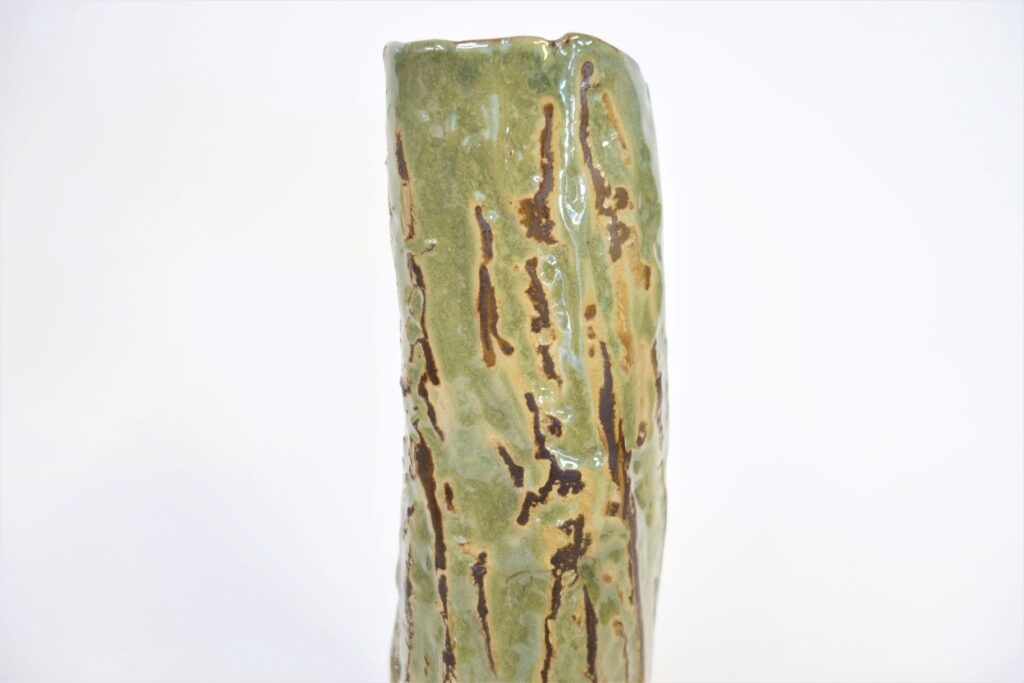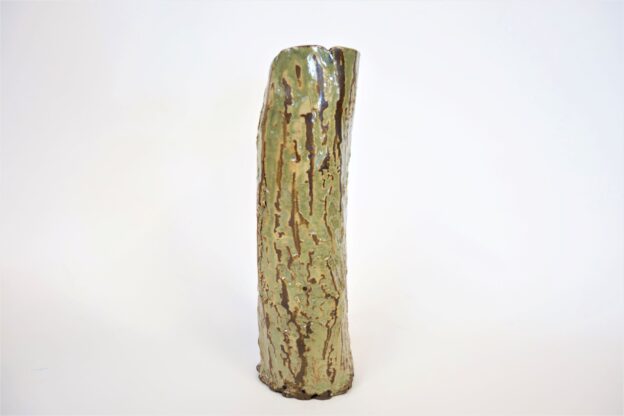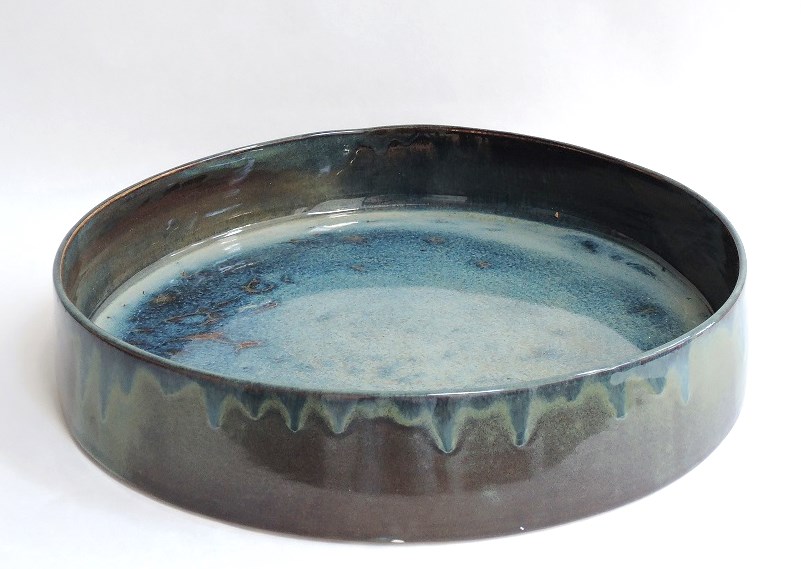A slab impressed against bark, then twisted into the shape of a tree trunk.
Stoneware, black clay, fired to cone 6, in oxidation.



A slab impressed against bark, then twisted into the shape of a tree trunk.
Stoneware, black clay, fired to cone 6, in oxidation.



I’m based in Ottawa now, and have become a member of Gladstone Clayworks. It’s taken me a while to adjust to new materials, glazes, and firing to Cone 6, which is lower than I was used to in Brussels. It’s been three months now, and I think I am ready to post to my blog again.
This blue glaze gives a wide range of colour, depending on the thickness with which it is applied. First I coated the entire pot with a thin coating of an iron-rich glaze. Next I poured the blue glaze in, and out; and left it to dry till the next day. For the final glaze application, I set the dish upside down on struts over a wide basin, and poured, letting the drips settled on the rim. These I did not fettle, but left, dangling from the rim. During the glaze firing, the heavy drops ooze downwards from the rim, creating a haphazard, speckled dark-blue surface.
Below – detail.
Over the flat surface inside the bowl (the kenzan used in ikebana requires a flat surface), the blue glaze breaks irregularly over the underlying brown glaze.